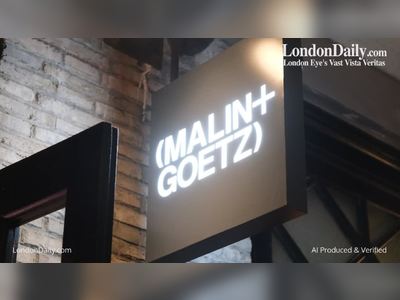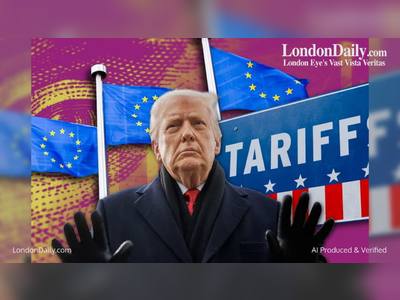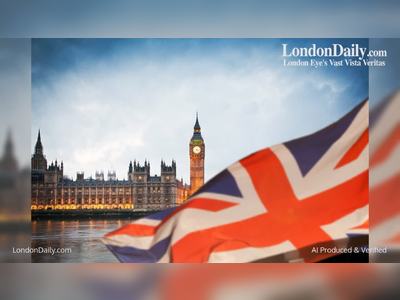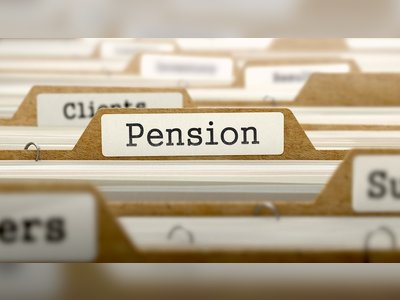
Just where is Joe Biden going to find gas for the EU?
U.S. President Joe Biden on Friday pitched himself as the EU's savior from its Russian energy addiction — but arranging a rapid increase in the amount of liquefied natural gas sailing to Europe won't be easy.
“We’re coming together to reduce Europe’s dependence on Russian energy,” Biden said at a joint press conference with European Commission President Ursula von der Leyen as the two leaders worked on how to punish Russia for invading Ukraine.
Both sides mentioned a goal of 15 billion cubic meters (bcm) of additional liquefied natural gas (LNG) delivered to EU markets this year, with hopes for 50 bcm more of U.S. LNG annually through 2030. Russia sends the EU 155 bcm a year, or about about 40 percent of the bloc’s total gas consumption.
But the details aren't clear.
Von der Leyen spoke of a "U.S. commitment to provide" those short-term volumes, but the final text of the joint statement says the U.S. will "work with international partners and strive to ensure" those cargoes find their way to the EU this year.
A senior U.S. official clarified that the promise of 15 bcm this year is actually a commitment to try and help convince companies in Asia or elsewhere that were expecting cargoes this coming winter to agree to send them to Europe instead. That would be a repeat of what happened this past winter, the official said.
But LNG industry executives meeting in Texas earlier this month warned that the weather would play a major role in dictating where cargoes go — and that a cold snap could see Asian countries clinging to their promised fuels.
"All importers are fishing in the same pool for supply," warned the International Energy Agency (IEA) in this month's guide to weaning the EU off Russian gas. Increasing LNG flows to the bloc would mean "exceptionally tight LNG markets and very high prices."
There is gas out there. The IEA wrote that Europe could scrounge up some 20 bcm of additional LNG on global markets — with 10 bcm more via pipelines from Norway and Azerbaijan, should those countries agree to ramp up production.
Even with considerable belt-tightening measures to cut demand and a speedy rollout of renewables, the best the EU could aim for would be cutting Russian gas reliance by a third this year, the IEA estimated. Brussels hopes for a two-thirds reduction.
Building capacity
Boosting U.S. LNG exports will be easier if European countries sign long-term contracts with U.S. suppliers, like the 11-year deal France's Engie signed in December with Cheniere Energy in Texas.
A fact sheet released by the White House on the deal noted that the promise of 50 bcm of future annual deliveries of U.S. LNG was "on the understanding that prices should reflect long-term market fundamentals and stability of supply and demand."
On Friday, Biden said it also meant the EU fast-tracking building permits for new LNG import terminals and pushing European countries to show there is sufficient demand for American gas through 2030.
“To accomplish this, the European Commission is going to work with the member states to store gas across the Continent [and] to build more infrastructure to receive LNG," Biden said.
Countries are already starting to move.
German Chancellor Olaf Scholz on Wednesday promised: "We will build our own LNG terminals much faster than we have until now,” while the Netherlands signed a five-year contract to lease a floating LNG import and storage terminal for later this year.
The European Parliament also voted to approve a list of cross-border energy projects to receive fast-tracked permits this month, which include 20 gas projects from import terminals to pipelines.
This week the European Commission also proposed a new regulation mandating gas purchases to beef up storage stocks each summer to ensure they are filled to 90 percent ahead of each heating season.
The race to get more gas isn't entirely at odds with the EU's green goals; it's aiming to be climate neutral by 2050, which doesn't leave much of a long-term place for natural gas.
The joint EU-U.S. statement says the new gas infrastructure should have a low carbon footprint, and includes a section on energy-saving measures in line with the EU's recent pledge to drastically reduce oil and gas consumption.
Von der Leyen underlined those targets by departing from prepared remarks to add that independence from Russian gas "can only be achieved through investment in renewables ... but also additional gas supplies."
Climate campaigners are aghast.
"Europe already has enough capacity to import the amount of gas the U.S. intends to supply," said Murray Worthy, an anti-gas campaigner for NGO Global Witness. "Instead of lining the pockets of American fracking companies, Europe should focus its energy investments on lasting solutions such as improving building insulation, heat pumps and renewable energy sources."
Von der Leyen insisted that new infrastructure would not lead to stranded assets or additional fossil fuel dependence, because "the infrastructure we use for gas today can be used for clean hydrogen in the future."
But American LNG exporters are already taking a victory lap.
Charlie Reidl, executive director of the Center for Liquefied Natural Gas lobby in Washington, said the joint statement's emphasis on "long-term contracting mechanisms with U.S. LNG suppliers" would "establish a virtual LNG pipeline to Europe ... well into the future."










